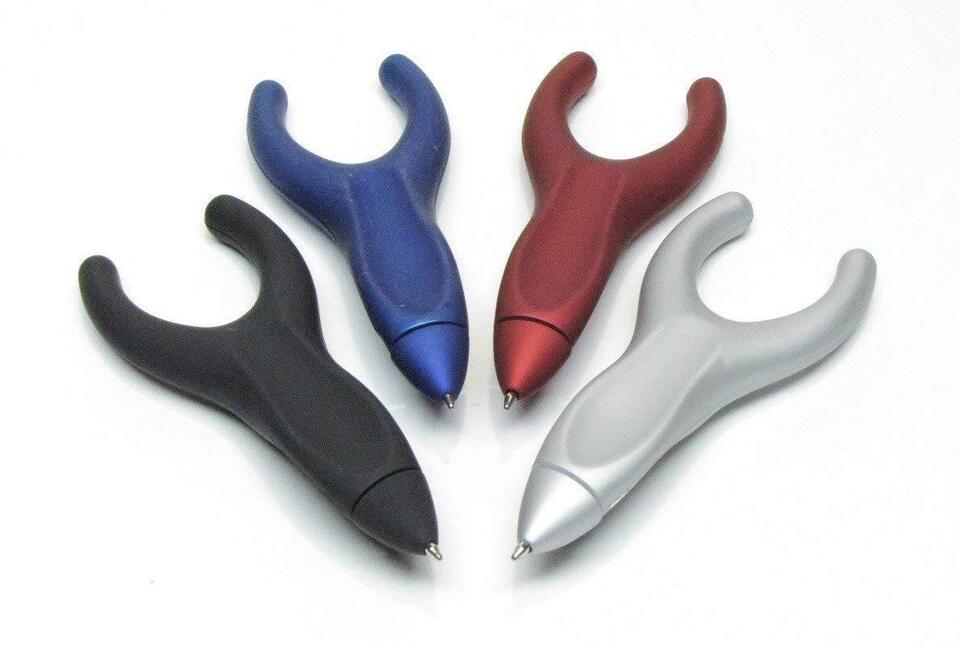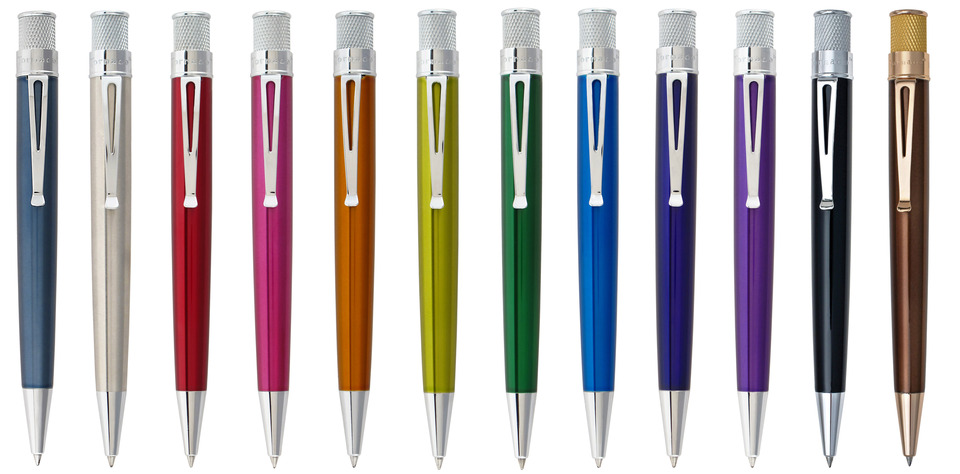Is a Ballpoint or Rollerball right for you?
6th Jun 2022
What is the difference between a ballpoint and a rollerball pen? Which one is right for you? Read on to discover the unique properties of each of these pens to help guide you on your choice of writing instrument.
It's all about the ink!
A ballpoint pen and rollerball pen may look the same from the outside (essentially they can have the exact same body and both use a ball and socket mechanism) but what differentiates these two types of pens is the type of ink inside the cartridge. A ballpoint pen uses an oil-based ink while a rollerball pen uses a water-based ink. Both pens have their advantages and are best suited to different writing needs.
The Ballpoint Pen - thick and smooth
The ballpoint pen is probably the most common type of pen around due to it's quick dry time and the varieties available in the economic price bracket. The quick drying, smudge resistant, bleed free oil-based ink is suitable for rushed note taking or filling out documents. The ink cartridges release the thick ink quite slowly so they last for a long time - another advantage for businesses that provide pens for public use (eg banks, post office, doctor's surgery). Ballpoint pens are often available in a choice of fine, medium or bold points but are usually limited to black, blue, red and green ink colours.
However, the ballpoint pen isn't the best choice for extended periods of writing. The thicker ink requires more pressure to be applied for the ink to mark the paper. This can result in indents being left on the underside of the paper and the following sheets of paper. It can also result in hand cramps.
How does a ballpoint pen actually work? There is a ball that tightly sits in a socket located at the end of the ink reservoir that has just enough room to roll when pressure is applied as you write. As the ball turns, gravity forces the ink down the reservoir and onto the ball leaving ink marks on the paper. As well as allowing the ink to transfer to paper, the ball also seals the remaining ink in the reservoir so the pen does not dry out.
The most popular ballpoint pens we sell here at Little Inkling Co. are the Fisher Space Pen Bullet Space Pens. Like all Fisher Space Pens, this pen will write in zero-gravity, upside down, underwater, over oil and grease, in -45 to +120 degrees Celsius, and three times longer than the average ballpoint pen.

Paul C Fisher Conceived the pen in 1948 to be used by NASA in space. The magic is in the thixotropic ink and the pressurised nitrogen gas that uses a sliding float to push the ink towards the tip, rather than getting gravity to do the work (hence it's appropriate for use in space where there is no gravity!). The thixotropic ink changes viscosity from thick when inside the ink reservoir to a thinner viscosity when pressure is applied allowing it to flow through the ultra-hard tungsten carbide ball to write on paper at any angle and in most conditions.

Combatting the hand cramps often associated with ballpoint pens, PenAgain’s patented wishbone shaped design has been called the biggest innovation in the writing instrument industry since the ballpoint pen replaced the quill. Unlike conventional pens that rely on the strength of your grip, the PenAgain’s ergonomic index finger cradle takes advantage of the natural weight of the hand to generate the pressure needed to apply ink to paper. Ideal for those suffering from carpel tunnel syndrome, repetitive stress injuries, Arthritis, Parkinson’s, etc…

The Rollerball Pen - consistent and free flowing
The nature of water-based ink often found in rollerball pens means less pressure is required to write with a rollerball pen compared to a ballpoint pen. The result of the pen gliding across the paper is a more vivid and vibrant marks on paper and finer lines. This makes rollerball pens perfect for extended time periods of writing and also handwritten cards and notes since the consistent and free flowing ink allows for a more creative writing style.
However, the water-based ink takes longer to dry than the oil-based ink in a ballpoint pen, resulting in potential smudging and bleeding. So, the pens are not as suitable for rushed note taking and as they require almost three times as much ink as a ballpoint, they aren't great for business to provide the public to use either as they run out quickly. They also need to be capped to ensure the ink does not dry out.
Rollerball pens are also able to deliver gel-based inks. The appeal of a gel-based ink is the huge variety of colours available, some with metallic or glitter finishes. They are not as consistent with their ink delivery compared to water-based ink and so there can be gaps in the ink marks as you write.
By far the most popular rollerball pens we range are the boldly coloured Retro 51 Tornado Rollerball Pens available with a stainless steel or brass barrel with with a translucent gloss colour lacquer overlay showing off a beautiful metallic finish. Each pen is fitted with a smooth flowing rollerball refill that is retracted with its trademarked knurl twist-top. It is complimented with polished brass, chrome or rose gold accents (Brown). They are the perfect gift, because one size gifts all! The tough decision is which colour to buy!

Choosing the right pen
Deciding which type of pen is right for you is a very personal decision. Here's a quick re-cap to help you decide:
BALLPOINT PEN - The pros: Quick drying time. Smudge resistant. No bleeding. Long lasting. Economical.
BALLPOINT PEN - The cons: Indents the paper. Limited ink colours. Hand cramps.
ROLLERBALL PENS - The pros: Allows for creative handwriting styles. Less likely to experience hand cramps. No indents on paper. Availability of coloured inks. Produces a very fine line.
ROLLERBALL PENS - The cons: Slow dry time makes it prone to smudging and bleeding. Uses more ink so runs out faster. Must be capped to prevent drying out.
Good luck with making your decision! If you have any questions about ballpoint or rollerball pens, please contact us.

